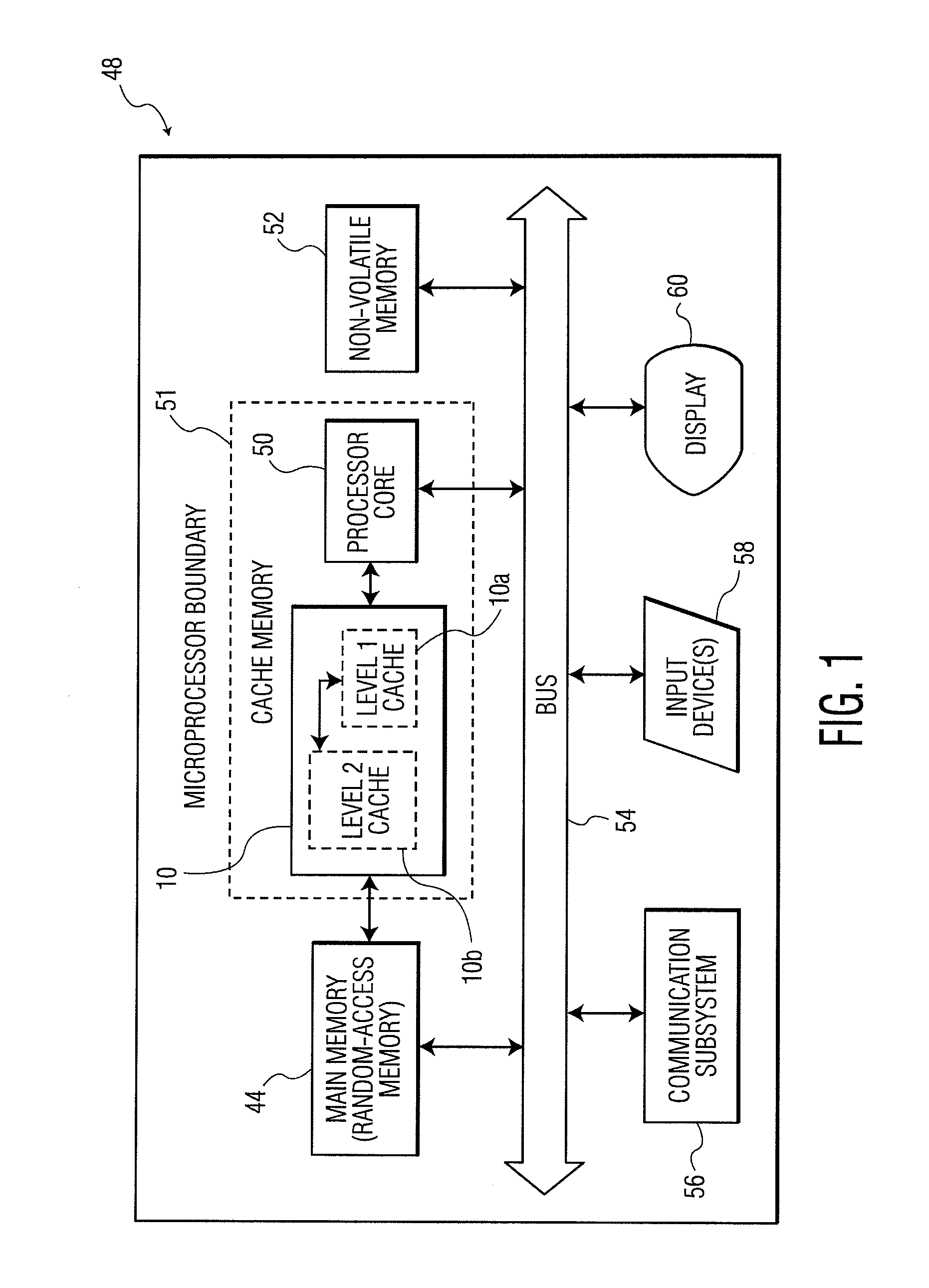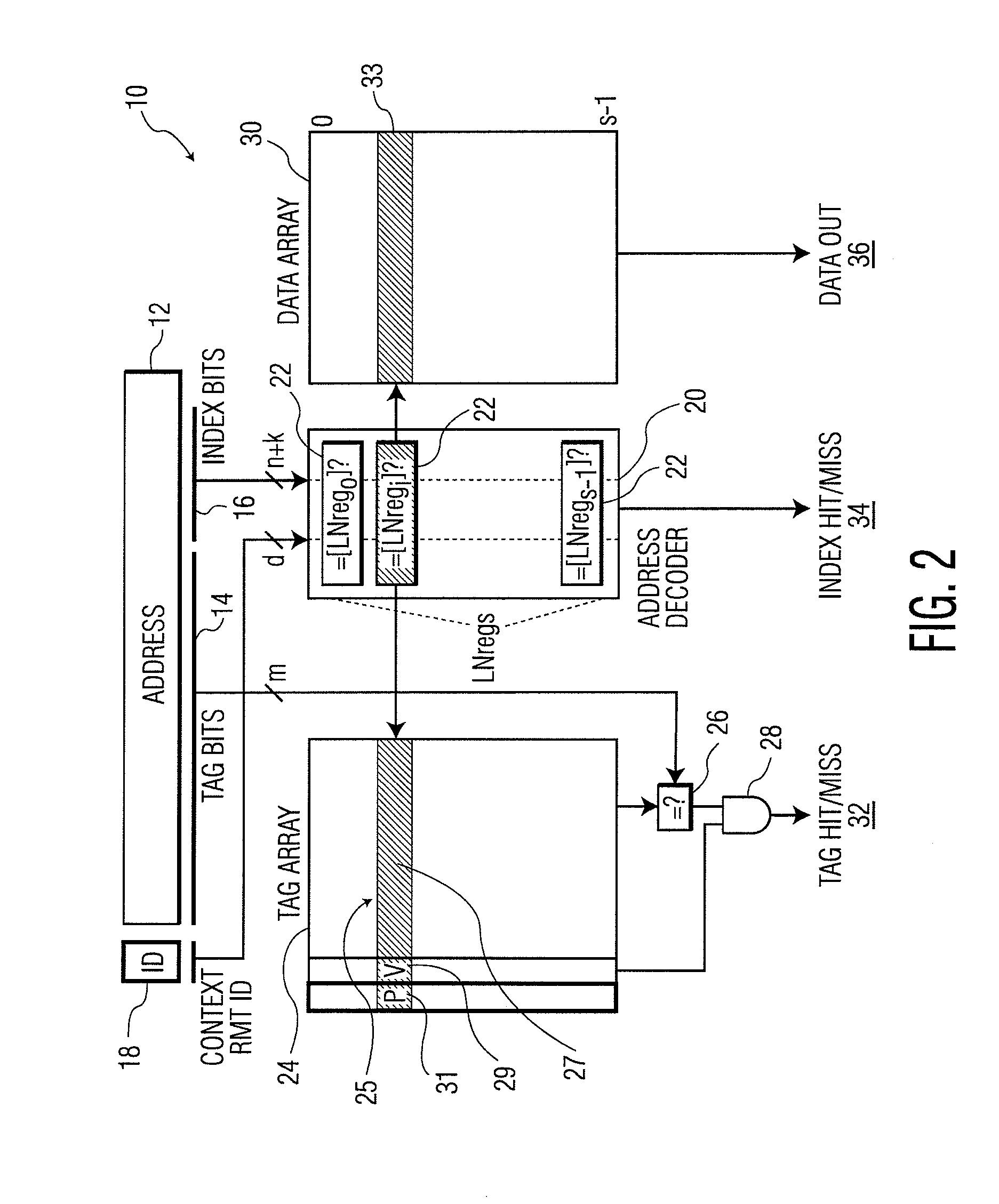Cache Memory Having Enhanced Performance and Security Features
- Summary
- Abstract
- Description
- Claims
- Application Information
AI Technical Summary
Benefits of technology
Problems solved by technology
Method used
Image
Examples
Embodiment Construction
[0025]The present invention relates to a cache memory, as discussed in detail below in connection with FIGS. 1-12.
[0026]FIG. 1 is a block diagram showing the cache memory 10 of the present invention, implemented in a computer system 48. As discussed below in greater detail, the cache memory 10 allows for dynamic mapping of contents from a main memory 44, so as to provide enhanced security and performance. The cache memory 10 could include a single type of cache memory, or two types of cache memory, such as level 1 cache memory 10a and level 2 cache memory 10b, as shown in FIG. 1. The cache memory 10 communicates with the main memory 44 and a processor core 50. As in many modern microprocessors, the processor core 50 and the cache memory 10 could be provided in the same processor chip; that is, within the boundary 51 of the microprocessor chip. Also, the cache memory 10 could be external to such a microprocessor chip, and in communication therewith.
[0027]The computer system 48 could ...
PUM
 Login to View More
Login to View More Abstract
Description
Claims
Application Information
 Login to View More
Login to View More - R&D
- Intellectual Property
- Life Sciences
- Materials
- Tech Scout
- Unparalleled Data Quality
- Higher Quality Content
- 60% Fewer Hallucinations
Browse by: Latest US Patents, China's latest patents, Technical Efficacy Thesaurus, Application Domain, Technology Topic, Popular Technical Reports.
© 2025 PatSnap. All rights reserved.Legal|Privacy policy|Modern Slavery Act Transparency Statement|Sitemap|About US| Contact US: help@patsnap.com



